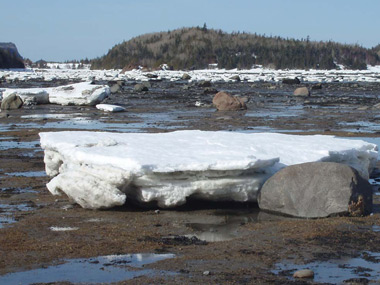Be Informed
Sign up for Sépaq emails to be the first to find out about our promotions, news and special offers.
Having extensive knowledge of the parks to better preserve them is the foundation that justifies the efforts invested in inventories, monitoring programs and scientific research. At Parc national du Bic, habitat diversity, accessibility of the territory and the great wealth of plant and animal life create a favourable environment for developing research collaboration with different institutions (universities, colleges and other organizations).
To date, many research projects have been conducted on the park’s floristic diversity; its evolution or the spread of invasive exotic species.
In terms of wildlife, we are monitoring the American porcupine, whose once exceptionally high population is now in decline, and it voracious predator, the fisher. The same goes for harbour seals in the estuary, where the situation is cause for concern.
Other species, such as the American eel, the Common Eider, the Peregrine Falcon, amphibians and reptiles and birds of prey are also the subject of research projects.
Other projects are also underway on tree diseases, impacts during development, land use and geomorphology.
Find out more about scientific research in the Québec's National Parks network
Already recognized for their high ecological value, salt marshes depend directly on the movements of the sediments that constitute them.

Pointe aux Épinettes salt marsh
Two types of surveys were initiated in the marsh in 2006. The first consists of measuring the rate of sediment deposition/erosion with aluminum plate markers buried under the sediment surface.
The second consists of tracking the annual movements of glacial blocks of more than one metre, pushed by winter ice. To date, 190 boulders have been discreetly and permanently marked with microchips.
The objectives:
Sign up for Sépaq emails to be the first to find out about our promotions, news and special offers.